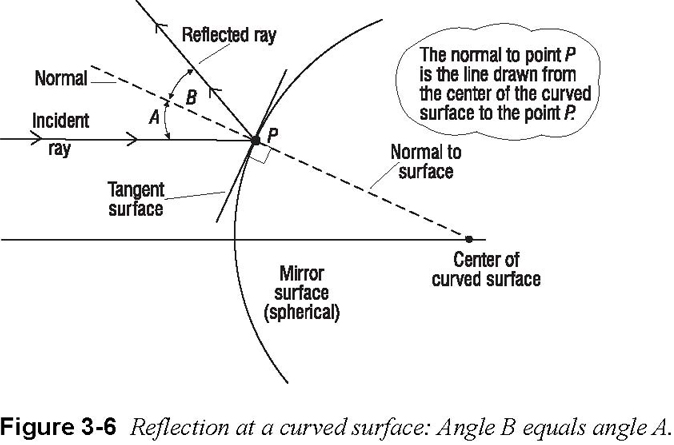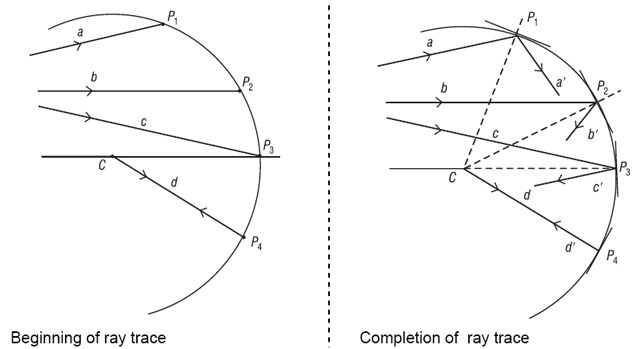
Since point P can be moved anywhere along the curved surface and a normal drawn there, we can always find the direction of the reflected ray by applying the law of reflection. We shall apply this technique when studying the way mirrors reflect light to form images.
Example 1
Using the law of reflection, complete the ray-trace diagram for the four rays (a, b, c, d) incident on the curved surface shown at the left below, given the center of the curved surface is at point C.
Solution: Draw a normal (shown dashed) from point C to each of the points P1, P2, P3, and P4, as shown above in the drawing at the right. At each point, draw the appropriate reflected ray (a′, b′, c′, d′) so that it makes an angle with its normal equal to the angle made by the incident ray (a, b, c, d) at that point. Note that ray d reflects back along itself since it is incident along the line of the normal from C to point P4.
Page: 12345678910111213141516171819202122232425262728293031323334353637383940
| Eyes carePhysicianBate's booksTechnologyForumLaser corre.Blues under eyesburning in the eyesanother diseasesMedical mistery Naturally eyesight correction. No laser eye surgery. Restore eyesight. Vision correction. досуг в Хабаровске | досуг Архангельск | |




